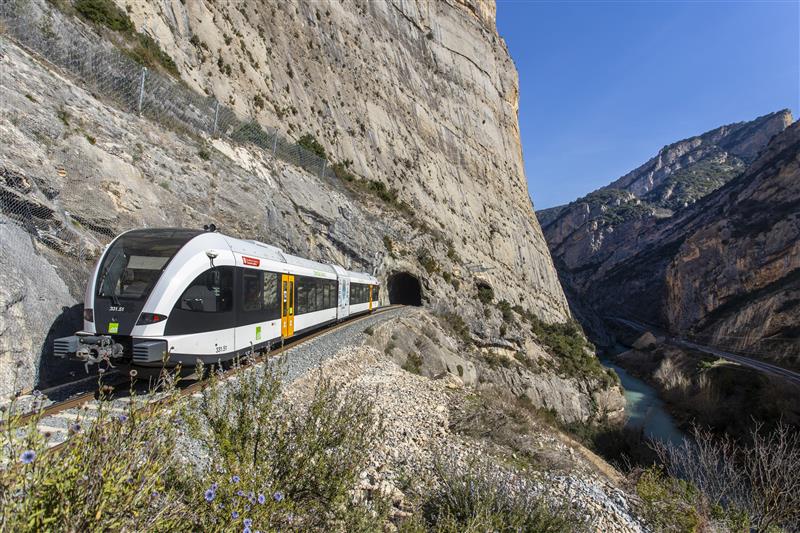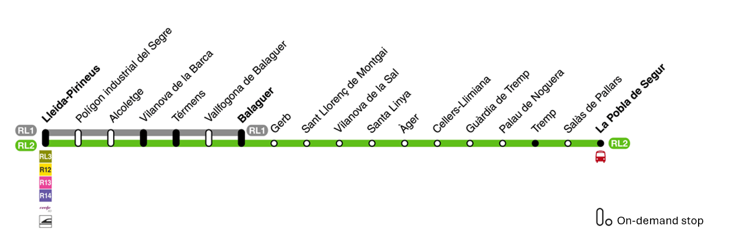Between Lleida and La Pobla: an on-demand train in the Pyrenees
In the High Pyrenees of Catalonia, an on-demand railway line connects 17 rural villages every day. The service model was redesigned by the regional authorities to keep the line efficient and viable, while maintaining transport services for the local population and visitors. Efforts to improve multimodality and modernise equipment have also helped to make the line attractive to people.
A historic but challenged transport line
The train line between Lleida and La Pobla de Segur is a 89 km long line connecting 17 villages in the Pre-Pyrenees. Operating in a mountain area, the railway line faces the natural constraints and counts in total 40 tunnels and 75 bridges to connect these rural communities. Natural constraints, coupled with the demographic decline of some villages and the increased use of private cars, limit the viability of train connections in some mountain areas.
Lleida – La Pobla de Segur is a historic line in the region. The railway between the municipalities of Lleida and Balaguer was opened in the 1920s, but it was in the early 1950s that the whole line became operative. However, it was identified in the 1980s as unviable and therefore to be closed. In 2005, the infrastructure of the train line was transferred to the Generalitat de Catalunya in order to maintain the service. Finally, in 2016, the Generalitat de Catalunya also assumed the operation of the line through Ferrocarrils de la Generalitat de Catalunya (FGC).

Flexible and intermodal transport
After the assumption of the line by the Generalitat de Catalunya, many changes were introduced to maintain the operation of the Lleida – La Pobla de Segur train line in order to better meet the needs of rural commuters while keeping the line viable on the long term.
Before the current train offer was defined, demand was analyzed and the service was adapted to the demand for transport. Therefore, timetables are based on the most needed time slots among local communities.
Moreover, an effort was made to increase the multimodality of transports in the region. The train timetables have therefore been adapted to correspond to the connections with buses and with the high-speed trains to Barcelona and Madrid.
Last but not least, to improve the flexibility and efficiency of the service, some stations are on-demand. In practice, this means that the line includes fixed stops and, in between, others for which passengers can request a stop. Passengers can push a button either in the train or in the station to alert the train driver. 12 of the 17 stations covered are on-demand and were selected based on the analysis of previous demand from users. This allows more rural stations to be covered and offers people an alternative mode of transport from private car, which is collective and more sustainable. This solution improves the quality of life for local communities and provides a last mile transport to visitors, as the route also passes through villages, sites and lakes that are popular among tourists.
The investments made have paid off for the line’s frequentation, which is constantly increasing (from 74.600 annual passengers in 2015 to 446.000 in 2024).

Note: good practice published in 2021 and updated in 2025.